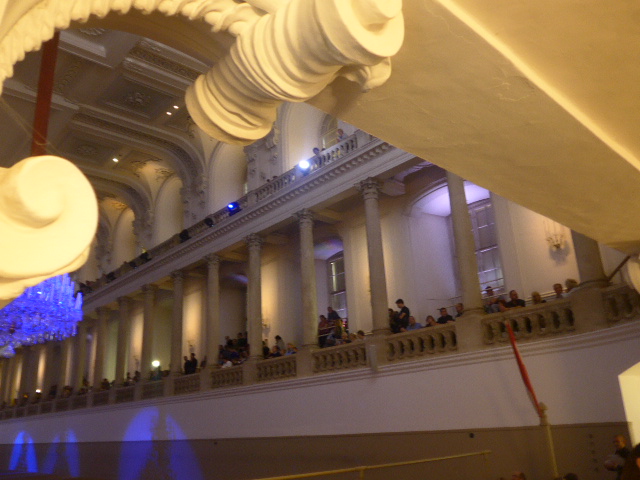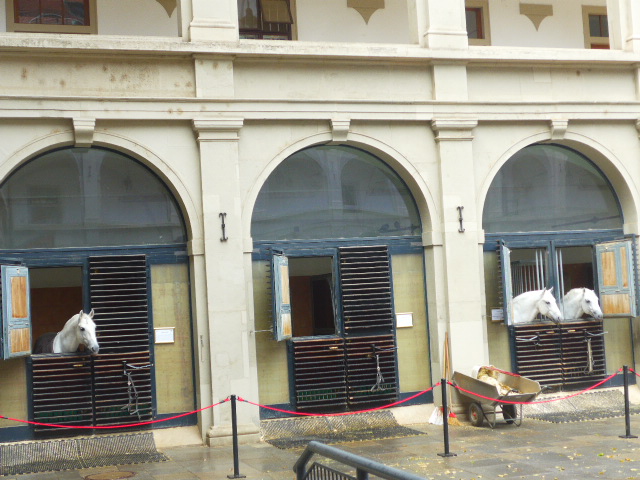 You know when you’re asked the question ‘are you a dog or a cat person?’ you wonder if there’s some kind of psychological insight being extracted for further analysis … My answer is always the same – I love horses firstly without doubt. And, any horse enthusiast would have earmarked The Spanish Riding School on their to-do list long ago – just like me.
You know when you’re asked the question ‘are you a dog or a cat person?’ you wonder if there’s some kind of psychological insight being extracted for further analysis … My answer is always the same – I love horses firstly without doubt. And, any horse enthusiast would have earmarked The Spanish Riding School on their to-do list long ago – just like me.
I’m here for the 11:00 am performance and it seems these fellows are having a day off. The others are readying themselves behind the scenes – the stallions being groomed methodically with every hair in place, then saddled, warmed up and given a little pep talk by their adoring masterful riders.
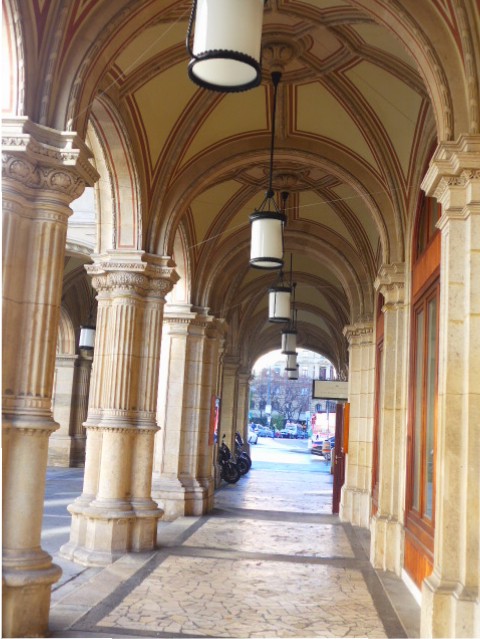
The school is quite central and only a short walk from the Albertina and located at the Hofburg.
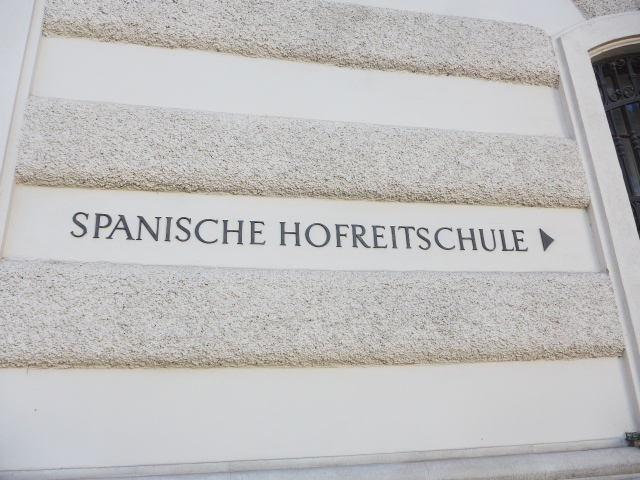
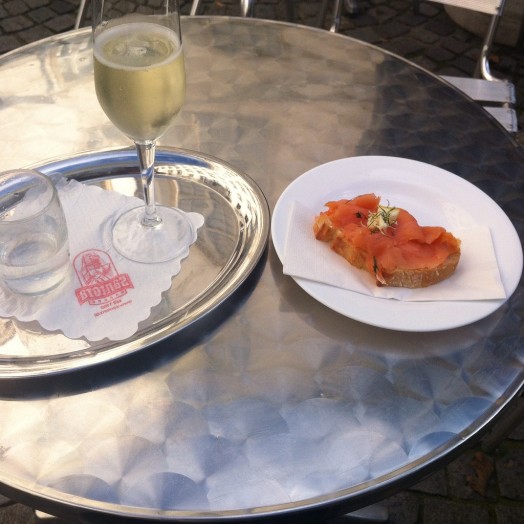
Beforehand you might think a cuppa be appropriate, however a glass of sparkling with a salmon starter is the order for this special occasion. Only five euros at the Lipizzaner Café which is open to all throughout the day and it’s adjacent to the entrance and ticket counter.
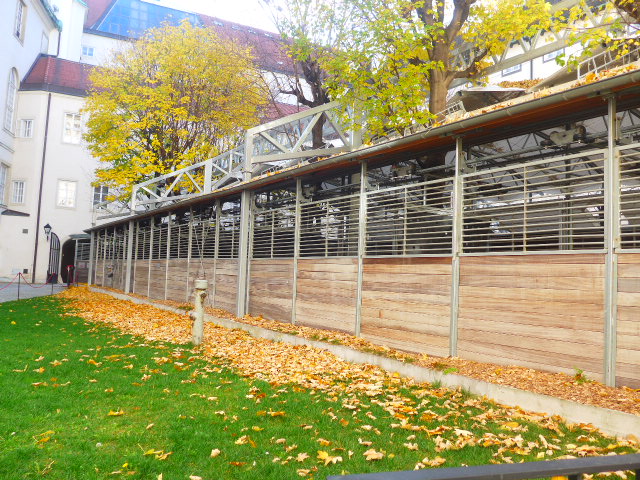
You can sit outside the venue and view the covered facilities as the horses are walked each day.
The 120 resident stallions are taken to their summer stables at Heldenberg-Wetzdorf-Lower Austria in July and August for seven weeks where they’re kept in stalls with paddocks. The horses are not schooled during this period, but instead, are simply taken out and ridden in the nearby forest to relax and enjoy the natural surroundings.
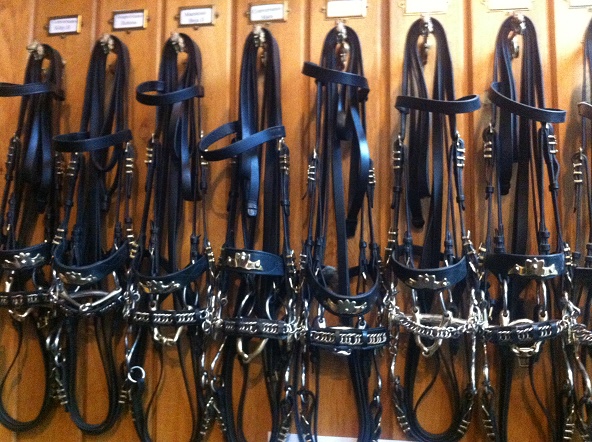
At various times during the day, you can also join a tour of the horse’s stables, tack rooms and general amenities. Pre-booking is advisable during peak times. Visit the official site for more information. http://www.srs.at/en_US/vorfuehrungen-en/
Address: Spanish Riding School, Michaelerplatz 1, 1010 Vienna
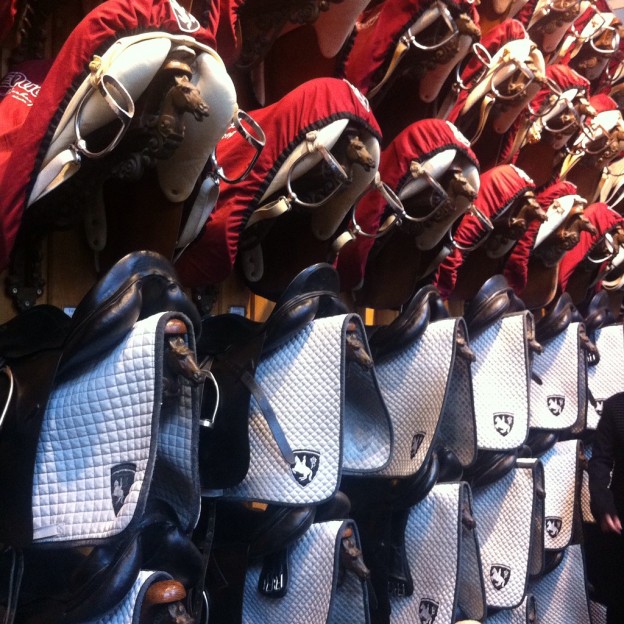
The rank of a Rider can be recognized by the number of golden lines sewn into the border of his saddle pad – two for the Rider and three for the Chief Rider. The black saddles are used for the training with the red-covered ones for performances and each saddle is fitted to suit the individual stallion – as are the bridles.
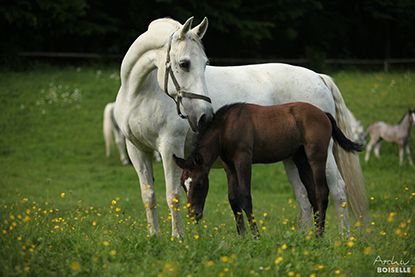
Lipizzaner stallions are born black, brown or grey and turn white with age but there are always a few bay ones between the greys that keep their dark coat colour. There is an old saying that says “as long as there is a bay stallion in the stable, the Spanish Riding School will last.”
Photo courtesy of Katja Stuppia
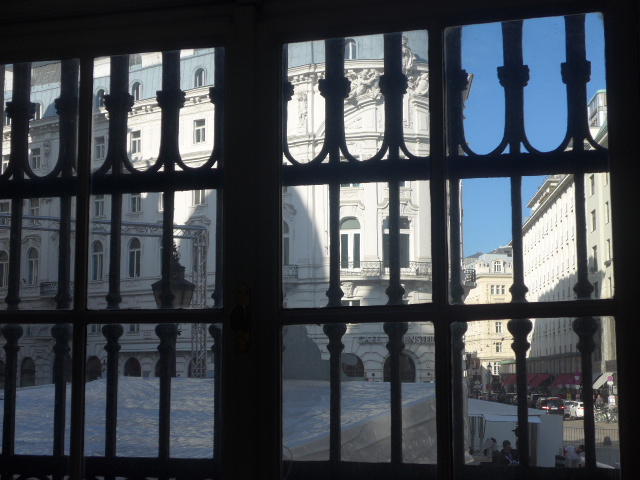
Entering the arena we already know this more than 450-year-old tradition has become an institution and about to be witnessed by many for the first time and hopefully not the last by me …
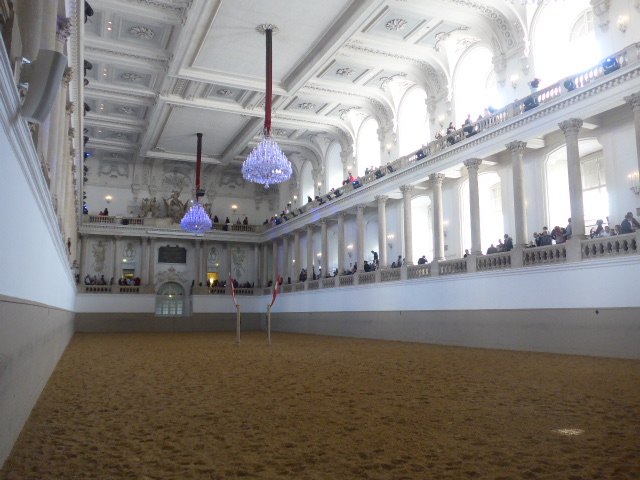
The grand ball-room-like hall is a beautiful baroque design; constructed by Joseph Emanuel Fischer von Erlach from 1729 to 1735, it’s been used as an indoor or winter arena and known as the Winter Riding School.
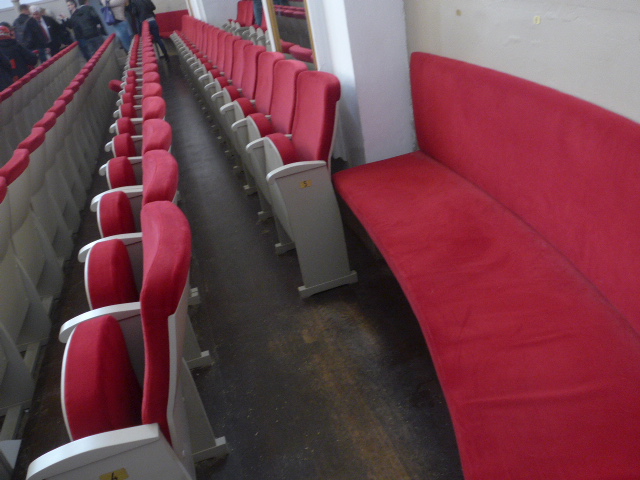
I was really pleased to sit at the lower level, for me as a past dressage rider it was preferable to view the educated movements from the ground.
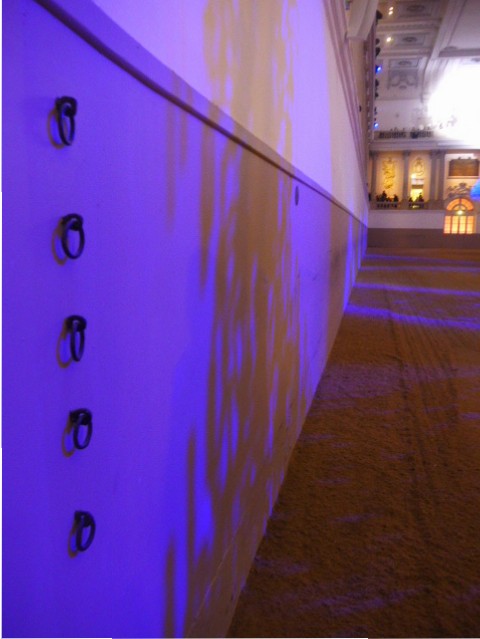
The walls act as a buffer to ensure the horse’s balance is kept and helps align its body and weight to carry out given tasks communicated by the rider through the legs and reins.
With its proportions of 56 metres in length and 18 metres in width, it’s used for daily training and performances.
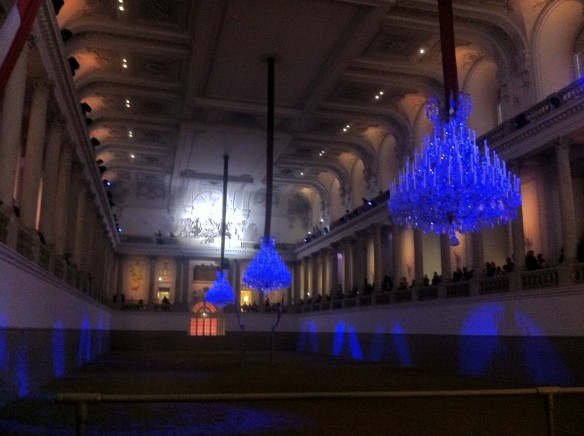
Lights out and classical music begins … anticipation is now at its most elevated!
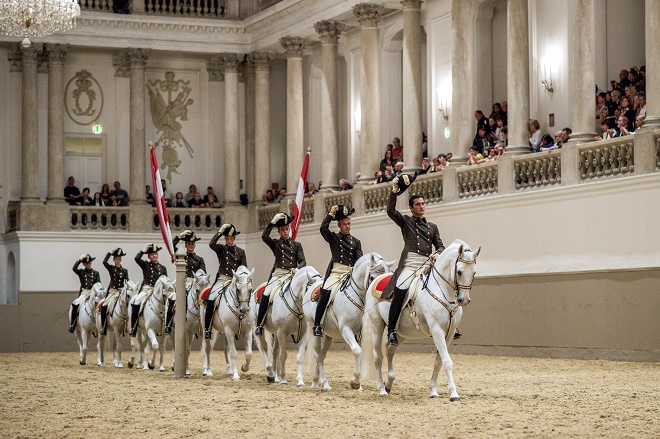
Photo courtesy of Vienna Tourist Board. Photography is not permitted during the performances.
It was funny to see the younger horses who were on show in the early part still giving a quick little pig root and swishing their tails to indicate their intention to be a bit naughty. However, once the more mature stallions entered and presented their levels of precision to the classical music in a perfect cadence, it was truly one of the most euphoric experiences you could ever wish to witness. Their combined attention along with pricked ears and shiny big brown eyes melted everyone’s hearts.
At the age of 4 years, the horses are brought from their home at Federal Stud Piber to the Training Centre Heldenberg and then to the Spanish Riding School in Vienna. During a 3-year training program, the more simple riding techniques are taught to the “Haute École” or High School executed movements. The first two years the horse is first ridden in a natural posture of all gaits, then afterwards turns and circles, tracking in complete balance and alignment with its rider.
In the third year the stallions are evaluated on an individual basis and begin learning the dressage movements such as piaffe, the passage, pirouettes, how to complete flying changes of the legs at the canter. Attaining these skills takes in total five to six years of training. Only a very few of the stallions ever master the most spectacular moves such as the levade, courbette, capriole because of the difficulty and these are also known as “Airs above the Ground“. The Spanish Riding School in Vienna is the only institution in the world where classical horsemanship (according to the Renaissance tradition of the Haute Ecole) has been practised and cultivated for more than 450 years.
Source: http://www.srs.at
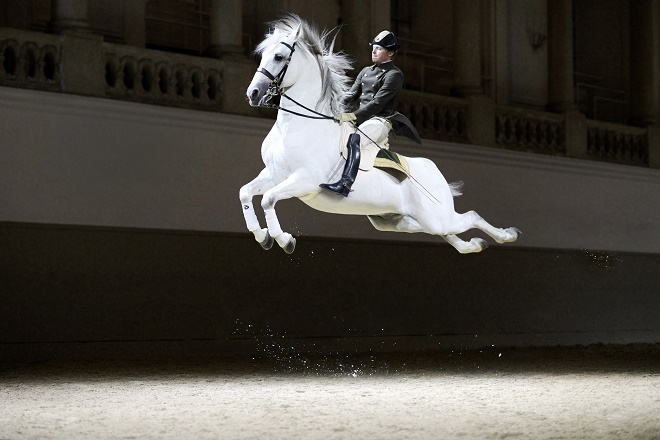
Photo courtesy of Vienna Tourist Board.
Performing the capriole, an upward leap made without going forward and a backward kick of the hind legs at the height of the leap. The objective of classical horsemanship is to study the natural steps and movements of the horse bringing it to the highest level of Haute Ecole by systematic training. This results in an unparalleled harmony between rider and horse, as only Vienna’s Spanish Riding School is presenting it nowadays.
Source: http://www.srs.at
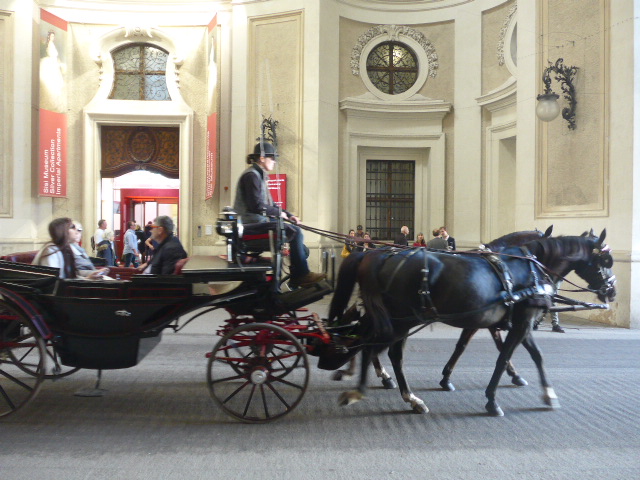
At the end of the magnificent performance, it’s time to head off and visit some more places, this time I won’t hail a taxi, it’ll be a carriage ride for old time’s sake and reminisce what it was like to own a horse.
